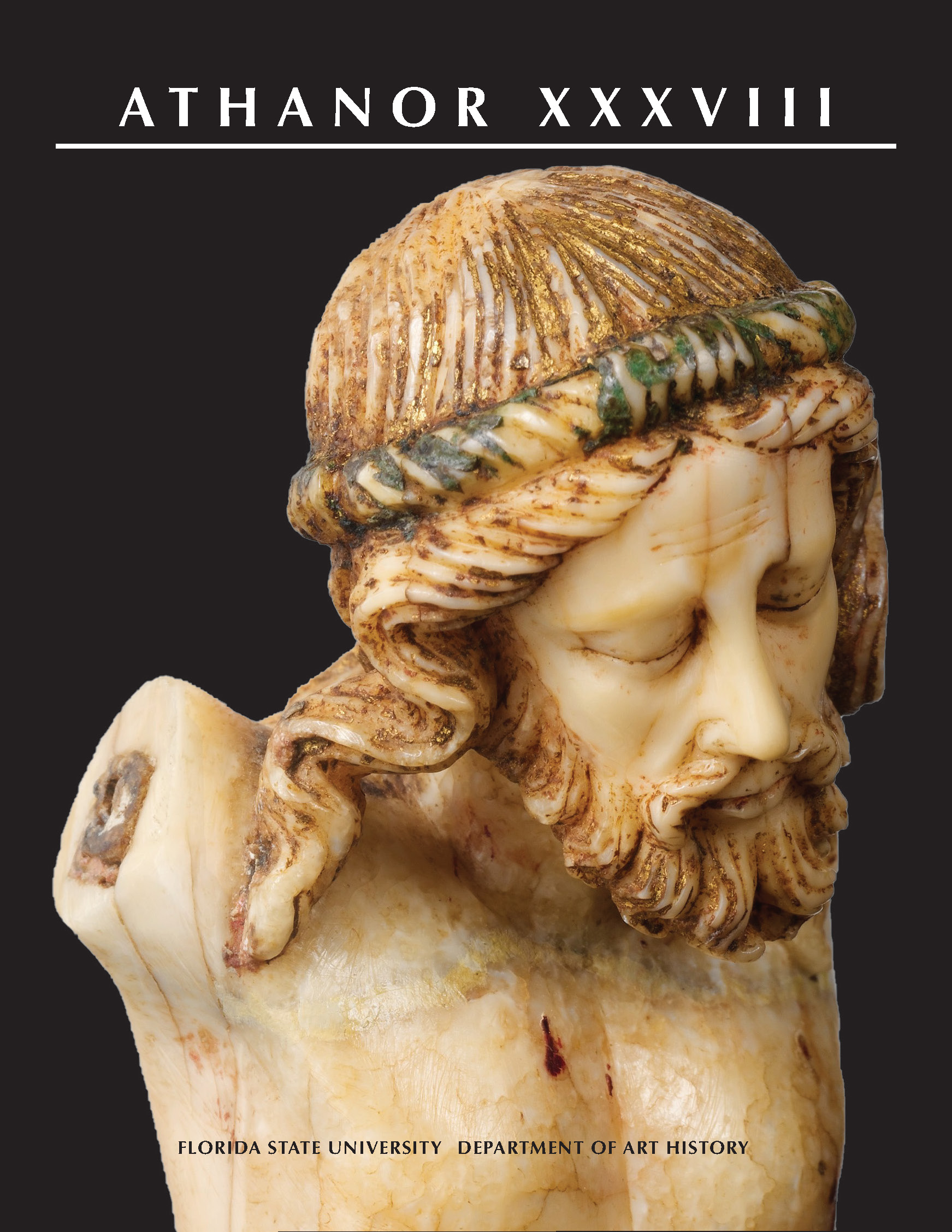Abstract
The Crucified Christ (Figure 1), now at the Metropolitan Museum of Art, captures both Christ’s serene acceptance of death and the graphic reality of mortality in a way rarely seen in medieval ivory carvings. Crafted by a Parisian artisan working in either England or Cologne around 1300, the seven-inch-tall statue now stands devoid of its arms and the small crucifix to which it was originally attached.1 Christ is depicted with his head falling slightly forward, the smooth S-curve of his body emphasizing his youthful form and artfully crossed legs. Scant remains of gold leaf on Christ’s hair and beard encircle the figure’s face in a heavenly light, emphasizing Christ’s calm dignity which was maintained even in death. Remnants of red paint accentuate Christ’s side wound and trail downward, mimicking the appearance of a trickle of dried blood. What makes this piece notable, however, is not the style in which it was carved, but the medium itself—walrus ivory. I argue that the material of the Crucified Christ, as manipulated by the sculptor, lends itself to affective contemplation, shaping the viewer’s devotional experience. By examining how sight, light, touch, and theology shaped a viewer’s perception of the work, I demonstrate how such pieces served to close the gap between the absent divine and the affective devotee.

Dieses Werk steht unter der Lizenz Creative Commons Namensnennung 4.0 International.
Copyright (c) 2022 Mia Hafer
